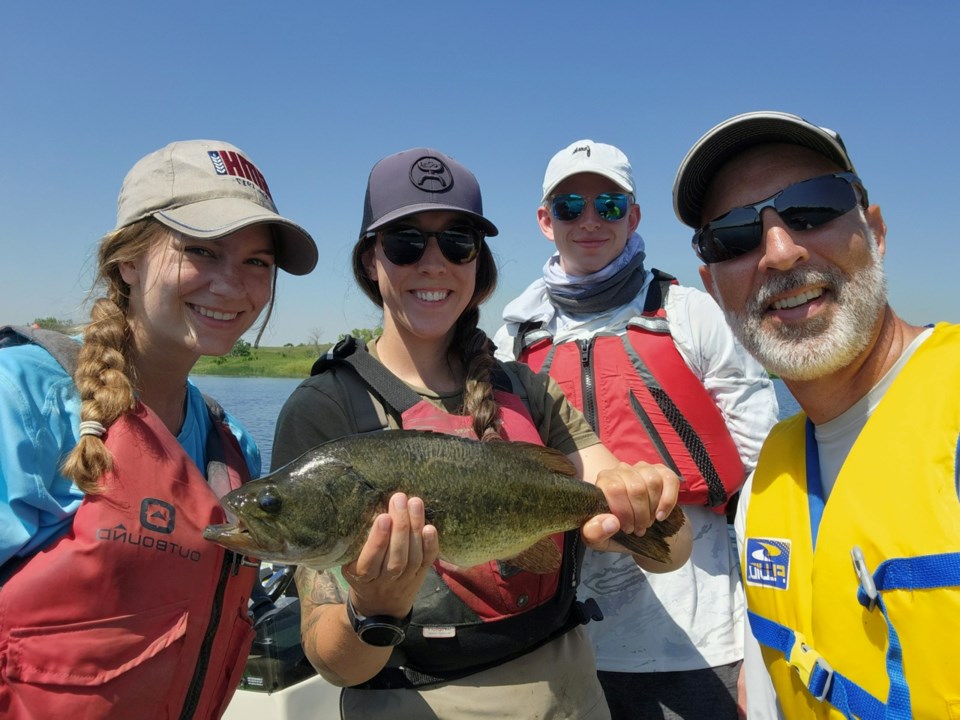ESTEVAN — Estevan city council learned more about bass at Boundary Dam and what could happen to them in the future during a recent meeting.
Dr. Chris Somers, a biology professor with the University of Regina, and Katlin McCallum, who is a master's graduate student at the university, presented the findings of their fisheries research to council.
Somers noted McCallum has dedicated two years of her life to the project and added they have been working on the reservoir for some time.
"We have some pretty interesting information and data. The program is growing and I think it's a great opportunity just to share some of that," said Somers.
Part of his research program involves fish and fisheries, and he runs the Saskatchewan Sport Fish Research Group, which does a lot of work in Saskatchewan and elsewhere. They regularly post on social media the activities they are undertaking in Saskatchewan, including Estevan.
While Saskatchewan has long, cold winters, Boundary Dam doesn't become as cold as other bodies of water because of the warm water effluent coming from the Boundary Dam Power Station, which is why the reservoir is the only place in the province that can have large-mouth bass.
"Hopefully most of the folks here have been out and had a chance to angle for large-mouth bass," said Somers. "But to give some perspective, they are by far the most popular fresh-water game fish in the United States and generate tens of billions of dollars in revenue in that country each year."
The presence of the bass is a "pretty fantastic" opportunity for anglers, Somers said.
But with looming changes in power generation in Saskatchewan and the potential for colder water temperatures at Boundary Dam, the future of the bass is uncertain.
"Since last year, we've had a full-time team of students that are here during the open-water months," said Somers.
The team spends every day out on the reservoir, taking measurements on the environment, trying to understand how the water is a driving force in the ecosystem that is there.
In an e-mail to the Mercury, Somers said their task as academics is to provide the best possible science to help inform decision-makers regarding bass and the changing environment in Boundary Dam. If there is anything that can be viewed as a useful management intervention, it would be in the hands of the Saskatchewan Ministry of Environment's fisheries unit.
"I think it's important for anglers to realize that there is only so much that can be done for the bass, and not to expect things in the reservoir to remain the same as the warm water effluent is reduced," he wrote.
One possibility they have raised in recent discussions is having the large-mouth bass fishery in Boundary Dam Reservoir become catch-and-release only. Current regulations specify a limit of two large-mouth bass, but given the looming uncertainty, it could be prudent to reduce the limit to zero, he said.
"Harvest of bass is likely not a huge pressure for them in Boundary, but it may be best to eliminate this source of mortality completely."
Somers added it is highly unlikely the bass will simply die out right away when the reservoir cools down.
McCallum said they are looking at the environmental characteristics of Boundary at this time. It will provide a baseline for the future as things continue to change.
"We're also looking into the larger fish biology and ecology as well as the smaller fish community in Boundary through a variety of methods," said McCallum.
The Ministry of Environment decided in the 1980s to stock the reservoir with large-mouth bass due to the temperature of the water.
Temperatures peaked at 32 C in August of last year, which was about 10 C warmer than native species, including the large-mouth bass, prefer.
The group has used various methods to look into the fish community, McCallum said. They measure length, weight and general health indicators. A small external tag is inserted into most fish before releasing them back into the reservoir.
Last year they caught 679 fish – including large-mouth bass, walleye, northern pikes, white sucker and yellow perch. Walleye dominated their totals, and that species seems to be doing well.
"The bass are a little bit interesting. They tend to avoid being captured with typical fisheries methods, so they might be a little bit under-represented here," said McCallum, who described them as "trap-shy".
In one net, they caught a turtle, a bass and a pike, which she said could only happen in Boundary.
Each indicator has an email address and a unique identifier. A couple they have tagged have been caught again near Crosby, N.D.
They have used devices to track temperatures in the reservoir. They typically peak at around 29 C in the summer months, which McCallum said is quite warm, and around 1-4 C in the winter.
Somers pointed out that bass here are on par with anything caught in the U.S.
Somers said they receive a number of reports of tagged walleye. A good number are being released. They tried a similar process with the bass, but something found in the slime on their skin doesn't allow them to tolerate a tag very well. If someone does catch a tagged fish, they can report it to the U of R group.
When asked by Coun. Rebecca Foord about how long the project would continue, Somers said this is just the beginning. They almost have a baseline, and they will likely continue until 2030.
The presentation concluded with Coun. Tony Sernick delivering Save the Bass buttons to Somers and McCallum, as part of his efforts to preserve the Boundary Dam Power Station.
SaskPower, the Natural Sciences and Engineering Research Council of Canada, the Canada Foundation for Innovation and the Government of Saskatchewan have all contributed to the project.




